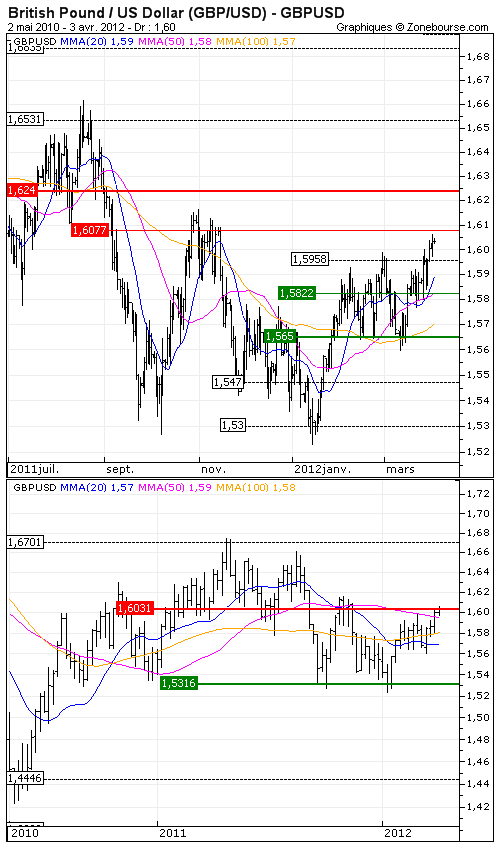British Pound / US Dollar (GBP/USD) : Towards USD 1.62
By Rodolphe Steffan
The Pound plunged under USD 1.5850 on March 28th after the announcement of a downward revision of GDP in the UK in the fourth quarter of 2011. Following growth of 0.6% over the previous three months, activity contracted by 0.3% between October and December, against a previous estimate of -0.2%, reducing GDP growth to +0.7% in 2011 full year.
The minutes of the last meeting of the BoE published a few days before were not likely to support the currency. Markets indeed learned that David Miles and Adam Posen have again called for the injection of 25 billion pounds into the economy despite the status quo of the institution earlier this month. The two members of the Monetary Policy Committee consider it is necessary to encourage demand as these unconventional measures do not prevent the decline in inflation that points to 3.4% over one year in February, against 3.6% in January.
It is clear that the British currency has benefited more from the weakness of the dollar in recent sessions. But speculations that the government of David Cameron would sell between 10% and 30% from 82 % of its stake in Royal Bank of Scotland, nationalized in 2008 during the financial crisis.
Technically, the break out of the psychological threshold of USD 1.60, not helped by a significant flow of good news, confirms the relative strength and the upward trend of Sterling. We maintain our long positions aiming for a more ambitious goal, in contact with our medium term resistance at USD 1.624.



